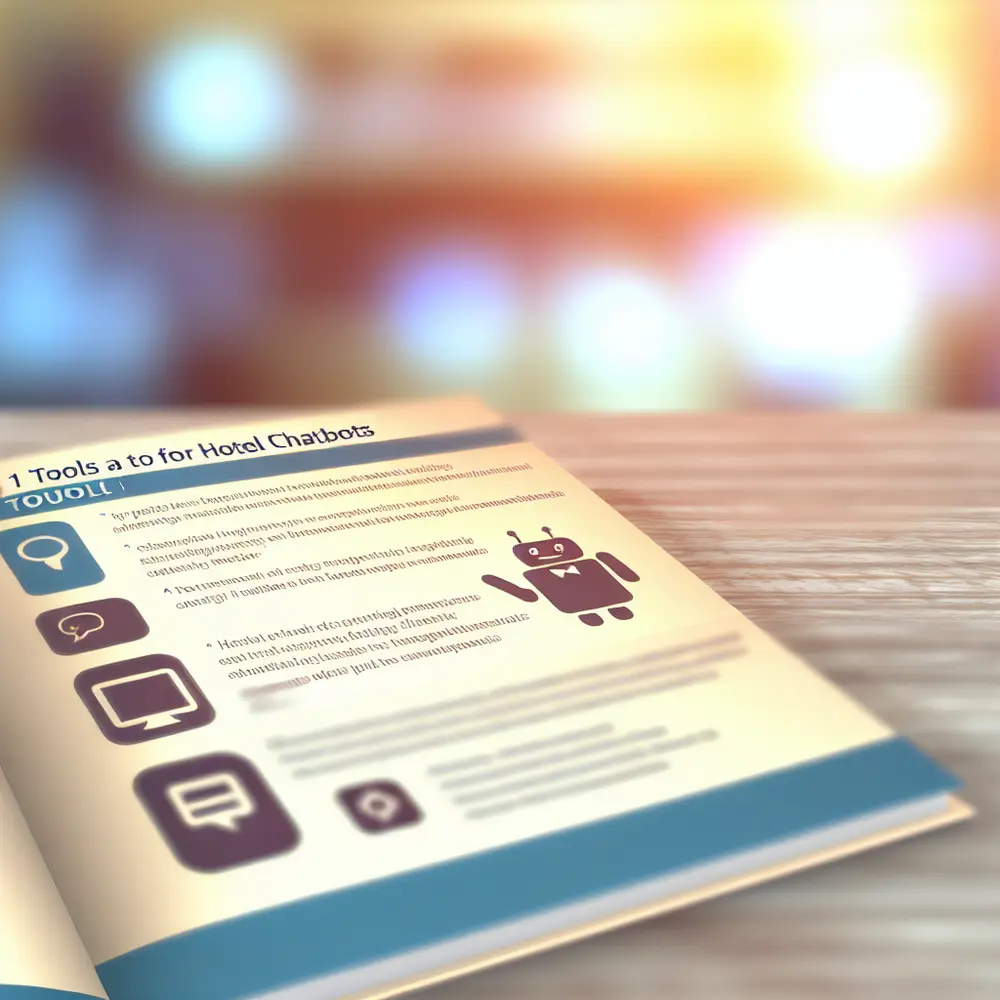In the fast-paced world of digital commerce, customer engagement is paramount for success. One of the most efficient ways to connect with potential clients is through the Click to Call feature, a revolutionary tool that allows users to initiate a phone call to a business with a simple click. This innovation is not merely a trend; it’s a necessity for businesses aiming to enhance their communication strategy and foster stronger customer relationships.
Imagine a potential customer browsing your website, intrigued by your offerings. With Click to Call, they can reach out without the hassle of searching for your contact number or dialing manually. This feature reduces barriers and streamlines communication, providing instant access to support and increasing the likelihood of conversion. In today’s competitive landscape, tools like Click to Call are transforming the way businesses engage with their audience, creating a seamless connection that can drive sales and improve customer satisfaction.
As we delve deeper into the functionality and benefits of Click to Call, we will explore how this feature not only enhances customer service but also acts as a valuable asset for marketing strategies. From analyzing call metrics to integrating with customer relationship management (CRM) systems, Click to Call proves to be an essential component for small and medium businesses looking to thrive in their respective markets. Join us as we uncover the extensive advantages and best practices for implementing Click to Call into your business operations.
What is Click to Call?
Click to Call is a feature that allows users to initiate a phone call to a business by clicking a button on a website or within an application. This function streamlines the communication process between potential customers and businesses, providing an immediate connection that can significantly enhance customer service and sales opportunities. By integrating this feature, small and medium businesses can reduce barriers to customer engagement and leverage their online presence to facilitate direct contact.
The functionality of Click to Call is quite straightforward. When a user clicks the designated button, their phone automatically dials the business’s contact number. This seamless transition not only saves time for the customer, who no longer needs to manually enter the number, but it also increases the likelihood of conversions, as engaged customers are just a click away from a conversation with a sales representative or customer service agent. The convenience of this service is particularly beneficial in today’s fast-paced environment, where customers expect prompt responses and easy access to support.
From a marketing perspective, Click to Call serves as a vital tool for enhancing user experience and improving lead generation. For instance, businesses can analyze Click to Call metrics to determine the effectiveness of their marketing campaigns and adjust their strategies accordingly. By tracking the number of calls initiated through the Click to Call feature, businesses can gain insights into customer behavior and preferences, allowing them to fine-tune their outreach efforts for better engagement rates.
Moreover, Click to Call can be integrated with customer relationship management (CRM) systems, offering businesses a more comprehensive approach to customer interaction. This integration allows for better tracking of customer interactions and preferences, which can provide valuable data for nurturing leads and improving overall customer satisfaction. For small and medium businesses aiming to enhance their communication channels, Click to Call is a practical solution that not only facilitates immediate connection but also supports long-term customer engagement strategies.
How Does Click to Call Work?
Click to Call is a powerful feature that simplifies the process of connecting businesses with potential customers. It allows users to initiate a call to a company directly from a website or a mobile application by simply clicking a button. This seamless integration provides an immediate communication channel, enhancing customer engagement and support. The underlying technology typically involves a hyperlink formatted with the “tel:” protocol, which instructs the device to dial the specified phone number when clicked. This feature is increasingly important in a digital landscape where immediacy is key to customer satisfaction.
The mechanics of Click to Call are straightforward. When a user clicks the call button, the system identifies the device they are using and facilitates a connection to the designated phone number. This process can be implemented through various platforms, including websites, email marketing, and social media channels. For mobile devices, the call is placed using the device’s native phone app, while on desktops, it may transition to services like Skype or other VoIP solutions that support calling functions. This flexibility ensures that businesses can cater to users on different devices, maximizing the chances of conversion.
Implementing Click to Call effectively requires strategic placement on websites and applications. The call-to-action button should be easily accessible and visible, often located at the top of a page or integrated into key components like product listings or contact sections. Pairing this action with strong messaging can encourage users to click the button, knowing they will receive immediate assistance. Additionally, businesses benefit from analyzing the usage data to refine their approach, understanding peak call times and optimizing their customer service strategy accordingly.
Furthermore, Click to Call can be enhanced with various features to improve customer interaction. For instance, using call tracking can help assess the effectiveness of different marketing campaigns on driving calls. Integrating CRM systems can allow for a more personalized customer experience, where agents are prepared with caller information upon answer. Automating responses or providing detailed FAQs through interactive voice response systems are additional enhancements that can position businesses favorably in competitive markets, ensuring they meet customer needs promptly and efficiently.
Benefits of Click to Call for Small and Medium Businesses
The “click to call” feature offers numerous advantages for small and medium businesses (SMBs) that can significantly enhance customer engagement and drive sales. One of the most notable benefits is the convenience it provides to potential customers. With just a simple click, users can connect with a business directly, eliminating the need to manually dial a number. This ease of access can lead to higher conversion rates, as the friction of searching for contact information and dialing is removed. Therefore, incorporating click to call on websites and marketing materials can streamline communication and encourage more inquiries.
Another critical advantage of click to call is the ability to improve customer service. For SMBs that may not have extensive resources, this feature allows businesses to prioritize customer queries efficiently. Customers can reach out for immediate assistance, be it product inquiries, troubleshooting, or appointment bookings, which fosters a sense of trust and reliability. Quick responses can enhance customer satisfaction and potentially lead to repeat business, making it a valuable addition to the service strategy of any SMB.
Additionally, click to call can serve as a powerful tool for data collection and analysis. Many click to call solutions provide analytics that can track call volumes, duration, and conversion rates. This insight is crucial for SMBs looking to refine their marketing strategies and understand customer behavior better. By analyzing call data, businesses can tailor their services, improve their sales tactics, and develop targeted marketing campaigns that resonate with their audience.
Moreover, integrating click to call functionality with customer relationship management (CRM) systems allows SMBs to streamline follow-ups and nurture leads effectively. This integration ensures that every call is logged and documented, enabling sales teams to track interactions and follow through with potential clients seamlessly. As a result, SMBs can create a more organized approach to managing customer relationships and drive overall growth through heightened responsiveness and interaction.
Choosing the Right Click to Call Solution
When considering click-to-call solutions, businesses must focus on several essential features that can significantly enhance customer engagement and streamline communication. One of the most crucial aspects is ease of integration with existing systems. A solution that can seamlessly integrate with customer relationship management (CRM) software and other communication tools allows for enhanced data sharing and improved workflow efficiencies. This integration ensures that marketing and sales professionals can capture valuable customer insights and enhance their outreach strategies.
Another important feature is the ability to track and analyze call metrics. Click-to-call solutions should offer comprehensive reporting tools that provide insights into call volumes, durations, and outcomes. These analytics are critical for small and medium businesses looking to refine their marketing approaches and improve conversion rates. By understanding which campaigns drive the most calls and which agents perform best, organizations can optimize their resources and focus on strategies that yield the highest return on investment.
User interface and experience also play a significant role in the effectiveness of click-to-call solutions. A straightforward, user-friendly interface enhances the customer experience by making it easy for potential clients to initiate calls. Additionally, features such as click-to-call buttons on websites, emails, or mobile apps should be customizable to match branding and be easily accessible, reducing friction for customers attempting to reach out. This convenience is essential for maintaining customer satisfaction and encouraging repeat business.
Lastly, businesses should consider the scalability of click-to-call solutions. As small and medium enterprises grow, their communication needs will evolve. An effective solution should offer flexibility to add features, increase call capacity, and adapt to changing workflows. By selecting a click-to-call solution that supports scalability, businesses can ensure they are investing in technology that will continue to meet their needs, facilitating ongoing growth and customer engagement long into the future.
Top Click to Call Solutions
When it comes to enhancing customer engagement and streamlining communication, click-to-call solutions have emerged as essential tools for small and medium businesses. These solutions simplify the process for customers seeking assistance or making inquiries, allowing them to reach a business with just a single click. Here, we present the top ten click-to-call solutions that can benefit various organizations.
- Twilio: Twilio is renowned for its robust API services that allow businesses to integrate click-to-call features into their websites and apps seamlessly. Twilio’s flexible infrastructure supports voice, SMS, and video communication, making it an excellent choice for businesses seeking a comprehensive communication platform.
- RingCentral: This cloud-based solution offers an intuitive click-to-call feature across multiple devices. Users can initiate calls directly from their browser or office applications, enhancing productivity and connectivity among team members and clients.
- Zendesk: Known for its customer support capabilities, Zendesk includes click-to-call as a part of its CRM system. This integration helps businesses manage calls effectively while tracking customer interactions, ultimately improving service quality.
- Grasshopper: Ideal for small businesses, Grasshopper offers click-to-call services intertwined with its virtual phone system. Users can easily set up a professional presence without needing a physical phone line, allowing for seamless customer communication.
- Freshcaller: Part of the Freshworks suite, Freshcaller provides click-to-call functionality alongside advanced call routing features. This solution is particularly beneficial for growing businesses that require a more sophisticated approach to handling incoming inquiries.
- 8×8: Offering a full-featured click-to-call system, 8×8 stands out for its international reach and call analytics. Businesses can enhance customer interactions by leveraging data-driven insights to refine their communication strategies.
- Dialpad: Combining AI-driven features with click-to-call, Dialpad enhances user experience by providing real-time insights during calls. This tool is perfect for sales teams who need to capture important data while conversing with prospects.
- HubSpot: A favorite among marketers, HubSpot’s CRM includes a click-to-call feature that integrates directly with its marketing tools. This synergy allows businesses to connect their phone communication directly with email marketing and lead management for a holistic approach.
- CallRail: Specifically designed for tracking and analyzing call sources, CallRail’s click-to-call functionality helps businesses identify which marketing channels drive phone inquiries. This tool is essential for businesses looking to optimize their advertising strategies.
- Nextiva: As a comprehensive communication solution, Nextiva offers click-to-call as part of its VoIP services. This system simplifies customer connections while providing robust analytics and reporting features to measure call performance effectively.
These solutions not only enhance the user experience by making it easier for customers to reach businesses but also provide companies with the tools necessary to track, analyze, and improve their communication processes. By implementing a suitable click-to-call solution, businesses can significantly increase the efficiency of their marketing and sales efforts, leading to better customer satisfaction and higher conversion rates.
Implementing Click to Call in Your Business
Implementing a Click to Call feature is a strategic move that can significantly enhance communication between businesses and their customers. This guide provides a comprehensive overview of how to effectively integrate Click to Call into your business operations to streamline customer interactions and boost sales.
To begin with, select a reliable Click to Call service provider that aligns with your business needs. Many providers offer different features, such as call tracking, analytics, and integration with existing systems like CRM software. Researching and comparing these options is crucial to ensure the selected service will effectively cater to your requirements. Ensure that the provider supports seamless integration with your website and other marketing tools you may be using.
Next, consider the placement of the Click to Call button on your website. It should be easily accessible and visible to customers, ideally on high-traffic pages such as the home page, contact page, and product pages. Utilizing contrasting colors or distinctive shapes can help draw attention. Compatibility with mobile devices is essential, as many users access websites via smartphones. Therefore, ensure that the Click to Call feature is responsive and functions well on various screen sizes.
Once the Click to Call system is set up, test its functionality thoroughly. Conduct usability tests to ensure the button is intuitive and that calls are being routed correctly. It’s also critical to verify that audio quality meets customer expectations. During this testing phase, gather feedback from a sample of users to identify any potential issues and assess overall satisfaction with the calling process.
Finally, analyze the performance of your Click to Call feature once it is live. Utilize call analytics provided by your service provider to gather insights into call volume, duration, and customer feedback. This data not only helps in assessing the effectiveness of the feature but also in refining your customer service approach and marketing strategies based on real user interactions. By following this how-to guide, small and medium businesses can successfully implement a Click to Call feature, ultimately enhancing customer experiences and increasing conversion rates.
Challenges and Solutions in Click to Call Implementation
Implementing a click to call feature can significantly enhance customer engagement for small and medium businesses (SMBs) looking to streamline their communication. However, there are several common challenges that organizations may face during this implementation process. Understanding these challenges and knowing the potential solutions can pave the way for a smoother integration of click to call technology into existing frameworks.
One prevalent issue is the technical integration of click to call with existing customer relationship management (CRM) systems. Many SMBs lack the technical expertise to seamlessly integrate these tools, which can lead to frustration and inefficiencies. To tackle this, businesses should consider partnering with technology vendors that specialize in click to call solutions. These vendors often provide support and resources aimed at ensuring a smooth implementation, enabling businesses to focus more on their operations rather than getting bogged down by technical difficulties.
Another common challenge is ensuring that the click to call feature is accessible and user-friendly for customers. If the feature is hard to find or complicated to use, it may deter potential leads. To mitigate this issue, conduct usability testing with real users before launching the feature widely. This testing can provide insights on the user interface and help identify any obstacles that could prevent effective communication. Additionally, placing prominent call-to-action buttons on mobile-friendly pages can enhance accessibility and encourage more customers to utilize the feature.
Moreover, businesses often worry about the potential for increased call volume overwhelming their customer service teams. When implemented effectively, click to call should enhance customer service, not hinder it. A viable solution is to implement call routing features that direct incoming calls based on set criteria, ensuring that calls are handled by the most appropriate team members. Additionally, incorporating automated responses can help manage frequent inquiries, thus freeing up customer service representatives to address more complex issues.
Finally, tracking performance and measuring the success of click to call initiatives can pose a challenge. Many SMBs may find it difficult to analyze the impact of this tool on their overall sales and customer satisfaction metrics. Integrating analytics tools that monitor and report on call performance, engagement rates, and conversion ratios can provide valuable insights into how effectively click to call is driving business objectives. Regularly reviewing these metrics will help businesses adapt their strategies and optimize their customer engagement efforts over time.
Measuring the Success of Click to Call Initiatives
Measuring the success of click to call initiatives is crucial for small and medium businesses aiming to enhance their customer engagement and boost sales. First, businesses must define clear objectives for their click to call strategy. These objectives might include increasing the number of calls generated, improving customer satisfaction, or closing more sales through phone interactions. By establishing these goals, businesses can create benchmarks to measure their progress and effectiveness over time.
To effectively assess the success of click to call initiatives, utilizing tracking metrics is essential. Important metrics to consider include call volume, conversion rates, average call duration, and customer feedback. Call volume indicates how many potential customers are engaging with the business through the click to call feature, while conversion rates measure how many of those calls result in a desired action, such as a sale or appointment. Tracking these metrics allows businesses to identify trends, optimize their approach, and make data-driven decisions to enhance performance.
Moreover, businesses can leverage analytics tools that integrate with their click to call systems to gain deeper insights. These tools can provide valuable data on customer demographics, peak calling times, and caller behavior. By analyzing this information, businesses can tailor their marketing campaigns and improve the overall customer experience. For instance, if data shows that most calls occur in the late afternoon, companies can allocate more resources or provide additional staffing during those hours to ensure that every customer receives prompt attention, ultimately leading to higher satisfaction rates.
Lastly, gathering feedback directly from customers is another effective way to measure the success of click to call initiatives. Surveys conducted after calls can provide insights into customer satisfaction and areas needing improvement. By actively listening to customer sentiments and experiences, businesses can refine their click to call strategy and ensure it aligns with customer expectations. This continuous feedback loop is vital for adapting to changing market dynamics and remaining competitive. In conclusion, measuring the success of click to call initiatives through clear objectives, relevant metrics, analytics, and customer feedback is essential for driving better results and enhancing business growth.
The Future of Click to Call Technology
The future of click to call technology shows promising advancements set to revolutionize the way businesses interact with customers. As digital communication methods continue to evolve, the click to call feature is becoming increasingly integral to a comprehensive customer service strategy. This tool allows users to initiate a phone call to a business with just a single click, significantly reducing friction in the customer journey and streamlining the sales process.
One major trend in click to call technology is the integration with artificial intelligence (AI). AI-driven solutions can enhance the user experience by employing chatbots to qualify leads before they reach a live agent. This ensures that the businesses receive calls from potential clients who are already filtered and more likely to convert, optimizing the efficiency of sales teams. Additionally, AI can analyze call data to provide insights into customer preferences and behaviors, allowing businesses to tailor their offerings and enhance customer relations.
Another emerging trend is the rise of mobile-first strategies. With the increasing prevalence of mobile devices in daily life, businesses are adapting their services to facilitate easier click to call functions on mobile platforms. Enhanced mobility means that potential clients can reach out to businesses anytime, anywhere, making click to call an essential element for companies aiming to capture leads and provide support promptly. Streamlining these processes through dedicated mobile applications or optimizing websites for mobile accessibility can greatly improve the user experience.
Moreover, the future of click to call will likely see more extensive integration with CRM systems. By connecting click to call features directly with customer relationship management tools, businesses can track interactions and gain valuable insights into call metrics. This integration would not only foster better customer interactions but also enable sales and marketing teams to evaluate the success of their campaigns based on real-time data. As technology continues to advance, adopting innovative click to call solutions will be crucial for small and medium businesses that seek to stay competitive and responsive to evolving customer needs.
Maximizing Your Click to Call Strategy
Maximizing your click to call strategy is essential for small and medium businesses looking to enhance customer engagement and streamline sales processes. Click to call technology revolutionizes the way businesses interact with potential customers by allowing them to connect with a representative instantly with just one click. This convenience not only improves user experience but also significantly increases the likelihood of conversion, making it a vital component of any effective marketing strategy.
To effectively implement a click to call solution, consider the integration of this feature into various touchpoints, such as websites, email campaigns, and social media ads. Ensure that the click to call functionality is visible and user-friendly, allowing customers to easily initiate contact. Use clear calls to action alongside the click to call buttons, guiding potential clients on what to expect once they connect. This reduces any friction during the call initiation process, making customers more likely to engage.
Moreover, employing analytics tools to track the performance of your click to call interactions can provide valuable insights. Assess metrics such as call duration, conversion rates, and customer satisfaction levels to determine the effectiveness of your strategy. Adjust the messaging and approach based on this data to further refine and enhance your results. Regular training and development for your sales team are crucial as well, ensuring they are equipped to handle incoming calls effectively, answer questions, and guide potential customers toward a purchase.
Finally, consider complementing your click to call strategy with other forms of communication, such as SMS and email follow-ups. Offering multiple channels not only caters to the preferences of different customers but also keeps the lines of communication open. By doing so, you can build rapport, foster trust, and ultimately secure more sales. Embracing a robust click to call strategy, while continually optimizing your approach, will position your business for sustained growth and success in an increasingly competitive market.









